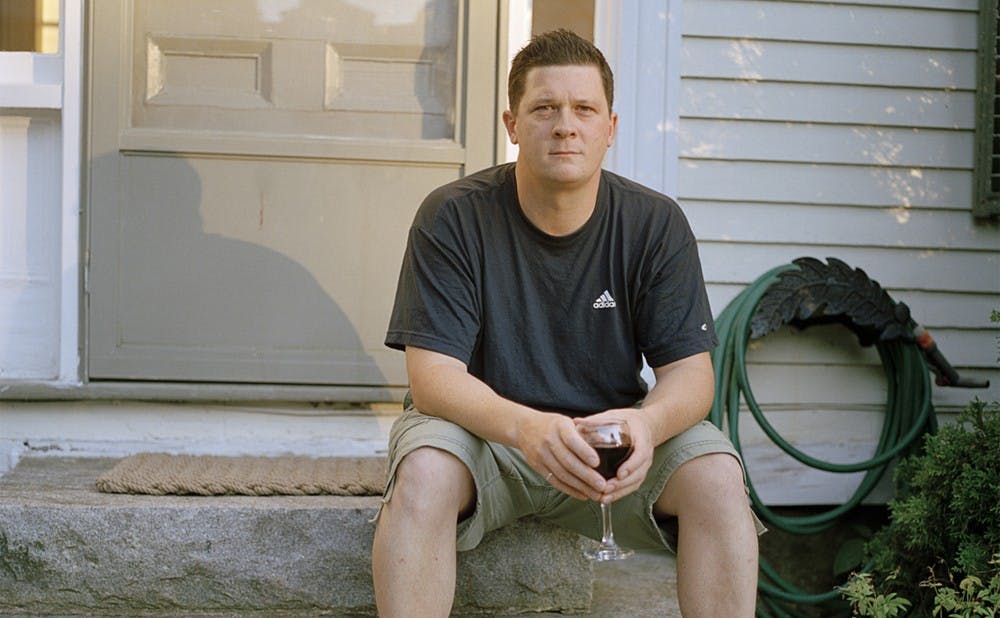For years, history has defined and framed race in terms of color. Yet in photographic representations of race, our perceptions are refined by the interaction of the subject and the space she inhabits.
Myra Greene, an artist and faculty member at Columbia College Chicago, questions the implications of racial identity through photography. Starting Monday, her exhibition My White Friends, which consists of 20 by 20-inch color photographs of her friends, will be on display at the Center for Documentary Studies.
Despite the bluntness of the title, the photographs are extremely nuanced in their depiction of whiteness. A quick glance at the photographs reveals little more than normal people in their environments. All hold the viewer in a direct gaze, almost challenging us to judge them. Yet their stoic expressions are unrevealing, forcing us to look at the composition as a whole. Some photographs are obviously staged, testing the effect of environment on our perceptions of race: a woman stands beside a golf course in a plaid skirt with a Pink Panther golf bag and average-looking parents with twins in matching polka-dot outfits pose outside their new suburban home.
In her previous work, Character Recognition, Greene explored the manner in which black women are “looked at” and represented, using her own body to illuminate those experiences. Using photographic processes reminiscent of those used during times of slavery, she asked: “If you remove everything from me, then how is my character recognized?”
My White Friends marks a departure from her exploration of blackness to one of whiteness.
“I had a conversation with a friend about whiteness and if she thought about whiteness and how people look at you when you’re white. She said, 'No, I don’t think about race in those terms; I don’t think about race as much as you do,'” Greene described.
Greene investigated the idea that race becomes important only when “otherness," or any deviation from whiteness, is involved.
“You don’t think about whiteness in a photograph. You look at a photograph of a white girl walking across the street and you would say, 'There’s a girl walking across the street.' But if it’s a picture of a black girl walking across the street, then you would say that it’s a black girl walking across, and race suddenly becomes important,” Greene said.
My White Friends creates conversation about the various facets that characterize whiteness, which are largely unnoticed upon first impression. Greene plays with the idea that spaces and environments may all have a racial identity and contribute to our perceptions about race.
As much as the photographs may appear purely documentary in nature, Greene deliberately plays with the notion of a photograph’s objectivity and depiction of truth.
“They’re not really portraits of the people—my friends—in the pictures. They’re my friends who are playing roles and playing types,” Greene said. “I expect people to read them quickly as documentary pictures, but as they look at them longer and longer, they can say, 'That’s staged,' or 'That’s performed.'"
My White Friends questions documentary portraiture in respect to the degree of truth or information that can be extracted without bias. The photographs are not depictions of the people themselves, but rather of the categories that they represent. Greene’s questioning of how much truth can be perceived from photographs parallels her exploration of how much an individual’s identity can be perceived through race.
Greene’s depictions of race resonated with Courtney Reid-Eaton, Exhibitions Director at CDS.
“[My White Friends] makes you...interrogate portraiture. When people look at a portrait—especially a documentary portrait—they will make up a story in their head about who they think that person is. But that might not be who that person is,” Reid-Eaton said.
Although race has always been a topic of scrutiny and conversation, Greene’s exhibition touches on the issue from a largely untraversed path. Reid-Eaton appreciates such an approach.
“Very rarely when people talk about race do they mean to talk about white people," Reid-Eaton said. "I am not a white person, and I am very conscious of the fact that white people have a race.”
In exhibiting Greene’s My White Friends, Reid-Eaton hopes to engage the campus and Durham in conversation about race.
“I want to talk to people about [My White Friends], to talk to them openly and frankly about race. This work is an amazing catalyst for that," Reid-Eaton said.
Greene’s voice carries throughout her photographs, beautiful visual creations translated directly from conversations with friends, fueling as many, if not more, conversations about race in the larger community.
My White Friends will be on display in the Center for Documentary Studies Gallery from March 10 through May 17. Greene will visit CDS on April 9 to give a talk about her work, including My White Friends. For more information, visit the CDS website.
Get The Chronicle straight to your inbox
Signup for our weekly newsletter. Cancel at any time.

